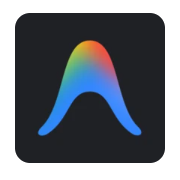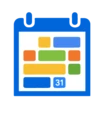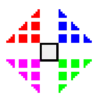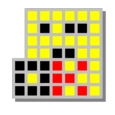What is Google Antigravity?
Google Antigravity is a state-of-the-art integrated development environment (IDE) powered by artificial intelligence. It provides developers with a suite of intelligent tools and autonomous agents that assist with various aspects of the software development lifecycle. From code planning and editing to refactoring, testing, and infrastructure management, Google Antigravity streamlines the entire process by delegating routine tasks to intelligent agents.
Unlike conventional IDEs or code assistants, which typically provide limited support or rely heavily on manual input, Google Antigravity allows developers to interact with autonomous agents that perform complex tasks autonomously. By integrating AI models such as Gemini and Claude, the platform facilitates intelligent collaboration, enabling developers to focus on higher-level tasks while delegating more technical, repetitive, or time-consuming work to AI-powered agents.
Key Features of Google Antigravity
Google Antigravity is packed with powerful features that enhance productivity and collaboration between developers and AI agents. Here are some of the standout functionalities:
1. Intelligent and Collaborative Development Environment
One of the key innovations of Google Antigravity is the intelligent collaboration between developers and AI agents. Within the development environment, you can interact with different AI models directly from the IDE, where the agent interaction area resides. You can select the model you want to work with, and the agents will receive instructions in natural language. This enables the agent to understand your commands and execute tasks such as:
- Code generation: The AI can automatically generate code based on your natural language instructions, saving time on repetitive coding tasks.
- Advanced autocompletion: The agents offer real-time suggestions and autocompletion features, improving coding efficiency.
- Error debugging: The AI agents can analyze code to detect bugs, suggest fixes, and even automatically debug errors.
- Intelligent suggestions: Agents provide smart recommendations based on the code context, helping you optimize your codebase.
This interaction mimics a collaborative environment where the developer is in control, but the AI assists in achieving a faster and more efficient workflow.
2. Mission Control and Multi-Agent Coordination
In Google Antigravity, you are not limited to working with a single agent. Mission Control is the centralized control center that allows you to manage multiple agents simultaneously. This feature enables you to distribute tasks across various agents and oversee their activities, increasing efficiency and coordination.
Through Mission Control, you can:
- Assign specific tasks to different agents, such as generating reports, creating test cases, or performing code refactoring.
- Request the generation of Artifacts, such as execution paths, detailed reports, or verifiable artifacts for each development iteration.
- Maintain traceability and control over your progress by monitoring the agents’ work and reviewing the artifacts they generate.
This multi-agent system offers flexibility and scalability for larger projects, where complex tasks can be divided across different agents, ensuring seamless development and task management.
3. Automated Testing and Infrastructure Management
Another remarkable feature of Google Antigravity is its ability to automate critical aspects of development, such as automated testing and infrastructure management. The AI agents help ensure that your code is thoroughly tested by generating test cases based on the code you write. Additionally, they can handle deployment, version control, and manage infrastructure seamlessly within the environment.
For developers, this eliminates the manual process of running tests, monitoring deployment, or configuring infrastructure, allowing for more efficient development cycles. Google Antigravity integrates with existing development tools to automate version control, deployments, and updates without requiring additional software.
4. Multimodal Support and Image Identification
Google Antigravity takes advantage of the latest multimodal technologies, integrating Gemini and AI’s ability to handle not just code but also natural language and images. This multimodal capability enables the software to:
- Translate ideas and instructions in natural language into functional code.
- Process app interface images and identify UI elements, allowing you to generate relevant code for app design or development.
- Use API responses to guide the development of new features, automatically adjusting code based on real-time data.
This integration of multiple input types means that developers can describe their desired outcome in various formats, and Google Antigravity will process the request and produce results accordingly. This makes the development process more intuitive and flexible.
5. Embedded Browser and Interactive Terminal
Google Antigravity also features an embedded browser and an interactive terminal within the IDE. This feature allows developers to:
- Inspect, test, and deploy applications directly from within the development environment.
- Use an interactive terminal to run commands, scripts, and test code without leaving the IDE.
This seamless integration ensures that developers don’t have to switch between multiple software tools to execute or test their code, keeping the workflow streamlined and efficient.
Why Choose Google Antigravity?
Google Antigravity stands out from traditional IDEs by incorporating intelligent, autonomous agents that work with you throughout the development process. Here are a few reasons why developers should consider using Google Antigravity:
- AI-Powered Collaboration: Interact with autonomous agents that can help you generate code, debug errors, and optimize your development process.
- Mission Control: Manage multiple agents simultaneously, assign tasks, and track progress, increasing team efficiency and project oversight.
- Automated Testing and Deployment: Automate routine tasks like testing, deployment, and version control, allowing you to focus on more strategic aspects of development.
- Multimodal Capabilities: Utilize natural language processing, image identification, and API responses for a more dynamic and flexible development environment.
- Embedded Browser and Terminal: Test, inspect, and deploy applications within the same environment, eliminating the need for external tools.
Conclusion
In conclusion, Google Antigravity is set to revolutionize the software development process by introducing AI-assisted programming and autonomous agents. This innovative development environment combines the power of AI with intelligent automation to assist developers in code generation, testing, infrastructure management, and more. By reducing manual work and increasing collaboration between developers and AI agents, Google Antigravity maximizes productivity and minimizes errors, making it an indispensable tool for modern software development.
Embrace the future of programming with Google Antigravity and unlock the full potential of AI-assisted development today.








